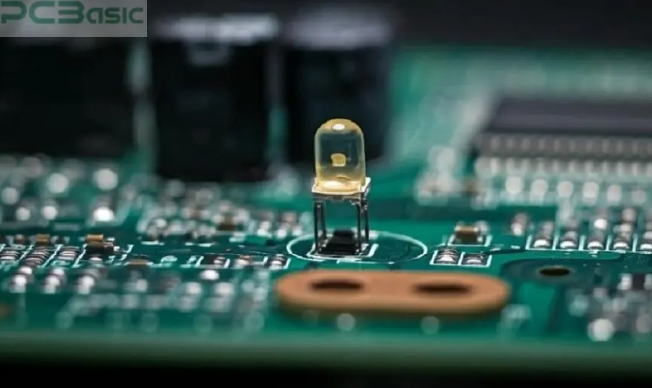In the world of modern electronics, Surface-Mounted Device (SMD) components are indispensable. Whether you’re assembling a circuit board or troubleshooting a device, understanding the various SMD components and how to identify their correct polarity, especially in diodes, is crucial. In this article, we’ll explore what SMD components are, and explain what SMD diode polarity is, and how to identify it to ensure proper circuit functionality.
What are SMD Components?
SMD components are miniature electronic parts designed to be mounted directly onto the surface of a circuit board, rather than through holes like traditional components. These components are commonly used in compact electronic devices due to their smaller size and ability to handle high-density assemblies. SMD components offer several benefits over through-hole components, including:
- Space Efficiency: SMD components take up less space on the PCB, allowing for higher circuit density and smaller devices.
- Improved Performance: The reduced size of SMD components leads to shorter electrical paths, improving the performance of the circuit.
- Automated Assembly: SMD components can be easily handled by automated assembly machines, reducing production costs and assembly time.
Some common types of SMD components include:
- Resistors (R): Used to limit the current flow within a circuit.
- Capacitors (C): Store electrical energy and are used to smooth out voltage fluctuations.
- Inductors (L): Used to store energy in a magnetic field and regulate current flow.
- Transistors (Q): Act as electronic switches, amplifying or switching signals.
- Diodes (D): Allow current to flow in only one direction, essential for rectification and protection circuits.
What is SMD Diode Polarity?
In electronic circuits, diodes are components that allow current to flow in only one direction, preventing reverse current flow. This unique feature makes them crucial for rectifying AC to DC, protecting sensitive components, and controlling current direction. However, for a diode to function correctly, it must be placed in the circuit with the correct polarity.
SMD diode polarity refers to the orientation in which the diode is placed on the PCB. Just like regular diodes, SMD diodes have two terminals:
- Anode: The positive side where current enters.
- Cathode: The negative side where current exits.
Incorrect placement of the diode (reversing the anode and cathode) can cause malfunction, damage, or failure of the circuit. Therefore, understanding how to identify the correct polarity is essential.
What are the Markings for SMD Diode Polarity?
Unlike through-hole diodes, which are easier to identify due to their visible leads, these diodes are compact and may look similar from both sides. However, there are a few common methods to identify the polarity.
- Cathode Marking (Band): Most diodes have a small marking, usually a stripe or band, on the cathode side, which indicates the cathode terminal. This marking is often a colored band (such as white or black) or a silver stripe on the side of the diode.
- Shape of the Package: Some SMD diodes come in packages where the shape can indicate polarity. For example, in the commonly used SMA package, the cathode side may have a small notch or cutout.
- Part Number Lookup: If the diode’s markings aren’t clear or the package is unfamiliar, you can look up the part number printed on the component. Manufacturer datasheets often provide polarity information and package diagrams.
- PCB Layout: In some cases, the PCB will have a silkscreen marking showing the correct orientation for the diode. This might be a plus (+) sign for the anode and a minus (−) sign for the cathode.
What Happens if the SMD Diode Polarity is Incorrect?
If an SMD diode is placed in reverse polarity, it can have several detrimental effects on the circuit:
- Reverse Voltage Damage: If the diode is used for rectification or reverse voltage protection, placing it with the wrong polarity can cause damage to other sensitive components in the circuit.
- Non-Functioning Circuit: For circuits relying on the correct direction of current flow, reversed diodes will prevent the circuit from working as intended.
- Overheating or Burnout: In some cases, a reversed diode may overheat and eventually burn out, possibly damaging surrounding components on the PCB.
What is the Best Way to Handle SMD Diodes?
Handling diodes requires care, particularly when identifying and orienting them on the PCB. Follow these tips to ensure accurate placement and avoid polarity issues.
- Use Magnification: SMD components are tiny, so use a magnifying glass or microscope to inspect the polarity markings carefully.
- Double-Check the PCB Layout: Refer to the PCB silkscreen and the component datasheet to ensure you’re placing the diode in the correct orientation.
- Practice with Tweezers: Since SMD components are small, using precision tweezers will help you place them accurately on the board without damaging them.
- Test with a Multimeter: Before soldering, use a multimeter to check the orientation of the diode by testing continuity between the two sides of the component.
Conclusion
Understanding SMD components and SMD diode polarity is essential for anyone working with modern electronic circuits. SMD diodes, in particular, require careful placement to ensure they function correctly within a circuit. By recognizing the common markings for polarity and following best practices for component handling, you can avoid mistakes and ensure the longevity and reliability of your designs. Whether you’re a hobbyist or an experienced engineer, mastering these concepts will significantly improve your work with electronic assemblies.

